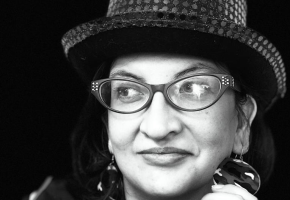The third poetry collection of Miguel Cullen, titled ‘Hologram’ (2022), follows in the footsteps of two very successful previous collections, ’Wave Caps’ (2014) and ‘Paranoid Narcissism’ (2017). Cullen is passionate about making his poetry an immersive experience, as he describes it: “more immediate…more than just lines of poetry... because from my experience in journalism, books can be discarded so easily.” This book is more of an objet d’art than a mere book. More for the coffee than the bedside table.
Music by collaborators on Wave Caps ( 2014) Kool FM,and MC Shabba IC3,
As a result, this new book is multi-media. It has an embedded light-weight video module that plays 4 video-poems, made in collaborations with videographers Ivan Wigan and Agustina Comedi. Published in a large format, the collection has two sections:
Part I, titled ‘GUEST LIST’ and Part 2, titled ‘STRAGGLERS’. In the first section, ‘Guest List,’ he refers to individuals who inhabit some of his poems, such as ‘Brad Pitt the poet’, ‘Pope Francis’, ‘Frida Kählo’, ‘Medusa’, even sport personalities like ‘Maradona +1 and +2’ and inevitably ‘Miguel Cullen +1’, himself, often written from the point of view of the celebrities themselves. In the second section,’ Stragglers’, Cullen selected some new and some older works, they are more experimental, more subversive, touching on some challenging themes, like sexuality and mental illness, but there is a freshness to them which is inspiring.
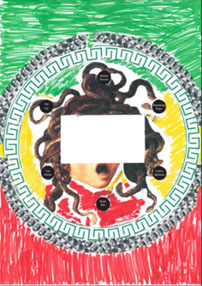 Inside Cover- with video screen- illustration by Alix Janta- Polszynski
Inside Cover- with video screen- illustration by Alix Janta- Polszynski
The videos are inserted into the front cover and after being charged (plug in at the base), can be activated by the little button on the inside edge and the buttons on the front. I do recommend you remember to switch it off again, or as with me, you might have ‘Brad Pitt the poet’ talking to you unexpectedly in the middle of the night!
Miguel Cullen was born in 1982 into an impressively illustrious heritage from both Scotland and Spain. His great grandfather on the Scottish side was William Berry, 1st Viscount Camrose, his grandfather Michael Berry, Baron Hartwell. On the Spanish side, you could name his great, great, great, great grandfather Francisco Hermógenes Ramos Mejía Ross (1773-1828) who was a significant landowner in Argentina, (Estancia Miraflores), and he was famed for his defence of the first nation peoples of the Pampas. Clearly Miguel Cullen was destined for great things. When Cullen’s ancestors arrived in Argentina, the Pampas were empty and totally devoid of trees, except for the evergreen Phytolacca Dioica, commonly known as the Ombú. As the tree ages, its extended roots are very dramatic, despite having a porous trunk and being technically a shrub. It symbolizes the roots that Miguel Cullen feels keep him connected to Argentina. Fortunately, some of the lands of the original Estancia Miraflores have remained in the hands of other descendants and relatives.
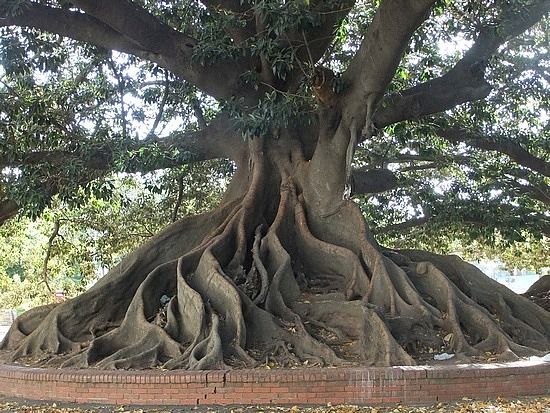
Ombú. Phytolacca Dioica
“My parents made a big effort to take me out there when I was younger. My memories are intermingled with Buenos Ares and the sound of the ‘chimangos’ (a small falcon bird), the brutality of the gaucho, nature and now the eucalyptus trees…. I love being there, it is so peaceful… and there is great literature from there.”
In particular some Gaucho literature, like ‘Don Segundo Sombra’ (1926) [by Ricardo Güiraldes]. Based on a real– life character, Segundo Ramírez, it is an unsentimental portrayal of a gaucho as a shadow (sombra) that crosses over Argentine history.
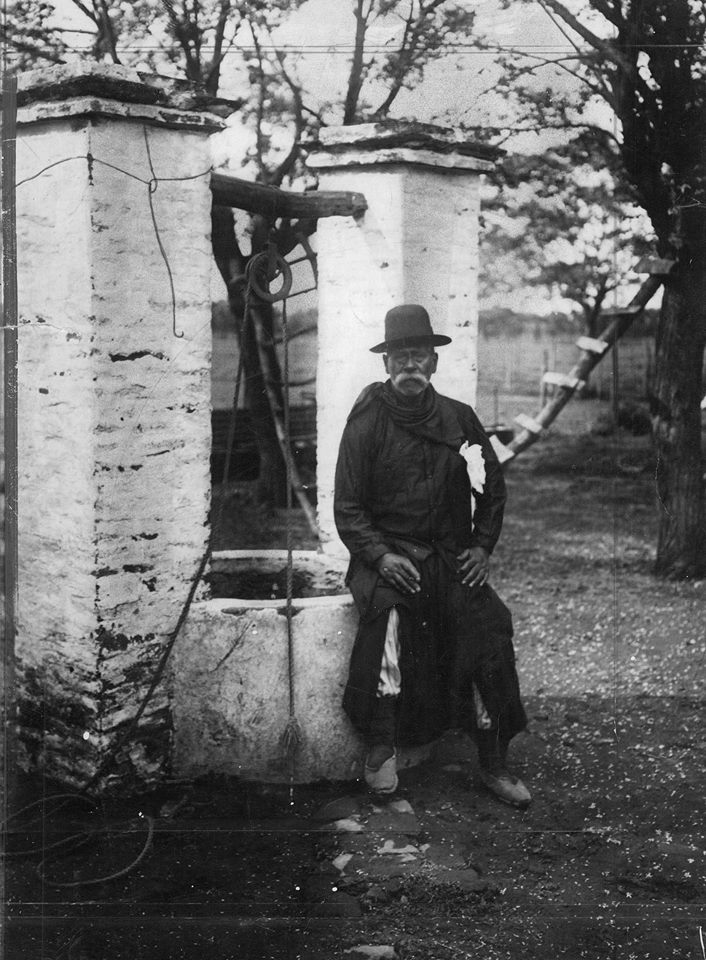
Segundo Ramírez on whom DFon Segundpo Sombra was based.
Then, there is the famous ‘Gaucho Martin Fierro’ (1872) [by José Hernández] which is purely fictional, but it is written as a poem. It is the best of the payada style poem evoking gaucho's lives and woes during the Wars of Independence. Another writer that Cullen admires is the naturalist and ornithologist Anglo-Argentine author W. H. Hudson (1841-1922), notably known for ‘Far Away and Long ago.’( 1918) Vibrant with cut-throat gauchos, ostriches, lagoons, and of course birds, this book, like the others, betray a deep love for the country and a touch of nostalgia about them, that appeals to Cullen.
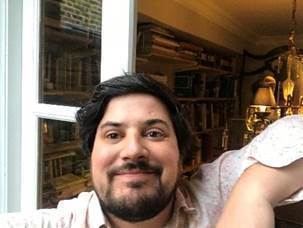 MIguel Cullen
MIguel Cullen
Miguel Cullen’s family came to Europe and Cullen was brought up and educated in the UK, primarily London and Bristol. But the young Cullen had yet to discover his talent, and it took a shock to his system to get there.
Miguel Cullen: _
“In terms of creativity, when I was 18, I didn’t realize that smoking the occasional joint would affect me mentally because I was callow and didn’t understand. It caused a schism in my mind and I was coloured by a sad period bordering on schizophrenia. It was a real time of trauma in my youth. It taught me a lot of things. I started to feel more worldly. After a trauma like that, having a psychotic break or episode, you feel that other things do not faze you as much as young guy or girls who have never been through anything similar. So, when I was at Uni, as I was into music, I started writing lyrics, especially for alternative Drum & Bass as well as Jungle. I would write lyrics about different subjects, like ‘prêt à manger’ sandwiches, or the ‘Lord of the Rings’, that was just coming out [The Peter Jackson Trilogy], and even ‘the Renaissance’, which interested me because my Dad is an intellectual and got me into it. “
Cullen’s first collection, ‘Wave Caps,’ won the Times Literary Supplement Book of the Year (2014). Experimenting with a Berryman-type stream of consciousness that, some say, predicted the new wave of diaspora poetry. In it, he refers to his life in an abandoned house of Brick Lane. It has beautiful art work by Alix Janta-Polczynski and includes an audio ‘song’ by Kool FM, DJ Brockie and MC Shabba IC3, music that he relates to so intimately.
Listen to the audio link: Kool FM. https://soundcloud.app.goo.gl/quii5MsdoHtpN2a9A
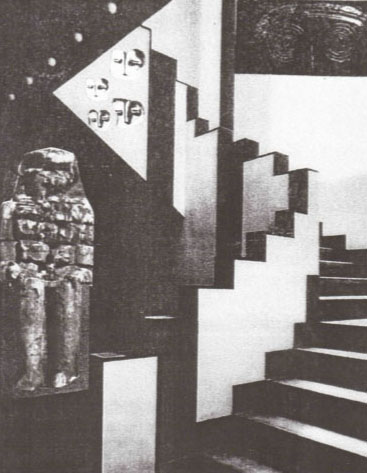
Illustration by Alix Janta-Polczynski
This music that Miguel Cullen was and is into, is very urban vernacular, a combination of Hip Hop, Drum & Bass and Jungle. Jungle developed out of the rave scene and sound system culture of the 1990s and it is characterised by rapid break beats, syncopated percussive loops, with melodies and vocal samples. Reading Cullen’s poetry, it is possible to see some of these qualities in his writing. The way Cullen plays and juggles with images, visuals and words, even different languages, creating the effect of a collage, is much like the music he loves. It all builds up from different sources to a final effect or experience. It can be hard to understand all the layers of meaning, but the emotions and feelings are conveyed, possibly as they elicit a more subconscious response.
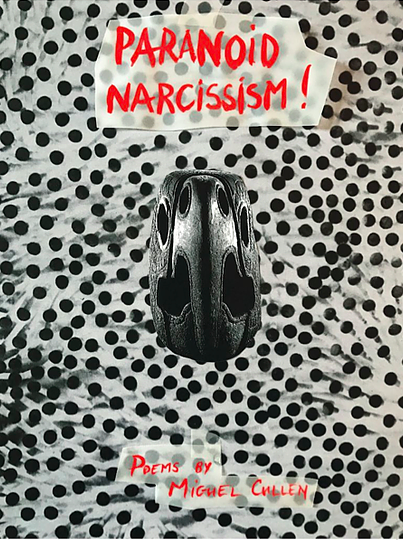
Book cover of second collection of poems Paranoid Narcissism
Someone might say: ‘What does he really mean? I have no idea, but I like it’. Much like someone who might see a painting and have no idea what it is about, but it still affects them. There is an emotional connection and this can be found in Cullen’s poetry. He recalls: -
“I remember reading that Dylan Thomas was at a lecture and he got invited to a party. He was already quite famous at that time. It was a random gathering and someone went up to him and said: ‘WHAT ARE YOU TALKING ABOUT? It doesn’t make sense… your poetry does not make sense’. Dylan Thomas was drunk and he did not react. It is interesting that even someone like Dylan Thomas, who is quite clear in his poetry, is told that it doesn’t make sense. Maybe all poetry doesn’t make sense. “
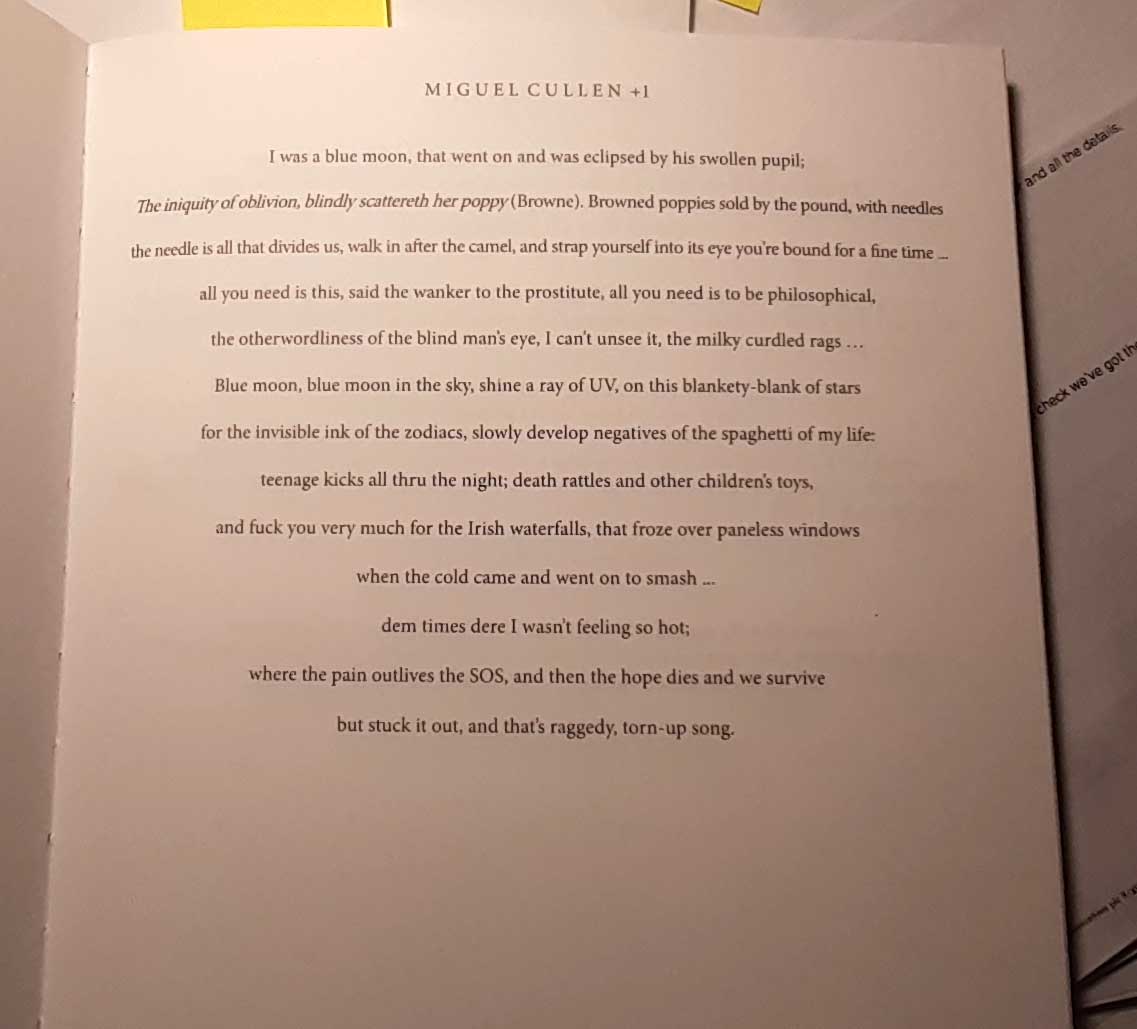
Miguel Cullen +1 from the GUEST Part 1 section of HOLOGRAM
Very aware of metaphors and the power of colour, Cullen uses it to illustrate and challenge. In his poem ‘Cadaveric Septic Sepia’ he writes:
“Outrageous Venetian greys, beautiful as the dog’s palace in an exhibition I saw, oh my verdigris romance! / cadaverous septic sepias are so gorgeous and by George! I’m playing keepy- uppy on my polo stick, striding at 100/ down the foul line – through lavender- mauve and Vaseline yellow lights so Chic!”
Cullen: -
“In this poem about Venetian grey, I am mocking it, because I am saying that in that palette that was trendy at that moment, there is something attenuated, even haunted: a haunted colourscape- “
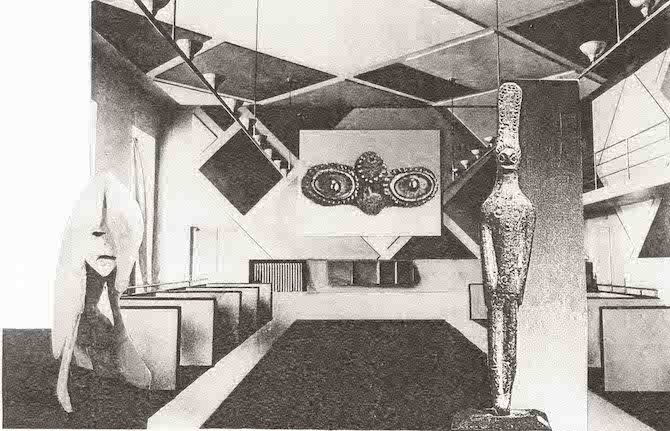
Alix Janta-Polczynski illustration for 'Wave Caps'
The two previous poetry collections introduced some audio and now there is also video. But even taking that into account, if you compare his new work ‘Hologram’ to his previous volumes, one can feel a change of dynamic. Cullen is in a very different place emotionally. He is now father to a daughter, Mary, and a couple of the poems refer to her: -
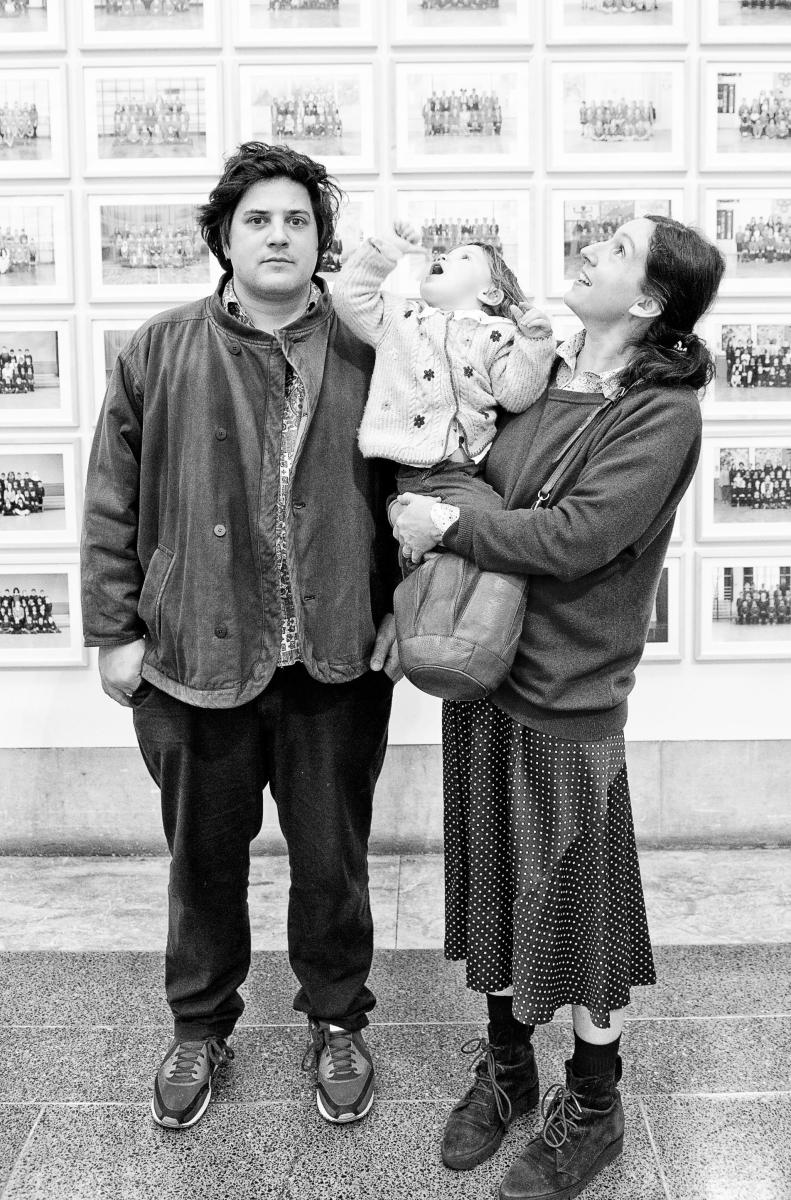
Miguel Cullen and family
Cullen remembers how he felt when he wrote ‘Mary Cullen 2’: -
“It was summer when I wrote that one. I remember walking down the road and there was a house being refurbished, the garden was so wild, growing out of something so difficult… and then
“… pink smogged by vein- green and grey gold. / I look inside this house and imagine / one such as ours / … the mouse’s nightly grandmother’s footsteps;”
[There were always] books around and about, this and that, and the books that we collect and the mouse that will go on my desk and it was, for me: - “… love’s jumper cords, radio transmitters /for another time, out of time, summer’s too long ago not to feel like that. It is [about] the way that children take you back to your own childhood. They bring back that sense of yearning and nostalgia that you felt when it was a summer afternoon and you were also that young. That’s a lovely thing!
One of the first poems I wrote that got published in Magma (which is a big compliment), was about how summer isn’t the same anymore. I wrote it after a night out and not being able to feel the same sort of chords or assonances that I used to feel, because there was something distorted in my vision of a beautiful scene or summer. [There] was not the same beauty or connection to the music of it. So, I wrote that it was less summery as summer was not like that anymore. [But then this poem about Mary] took me back to me. The [child’s spontaneous] intuition and the natural way of feeling things, and talking… talking is very connected to their own presence and their own feeling of how present they are. They bring you back and suddenly you are in there and you remember with their voices and their presence in the summer… and winter”: ‘Yes, this is how I used to feel.
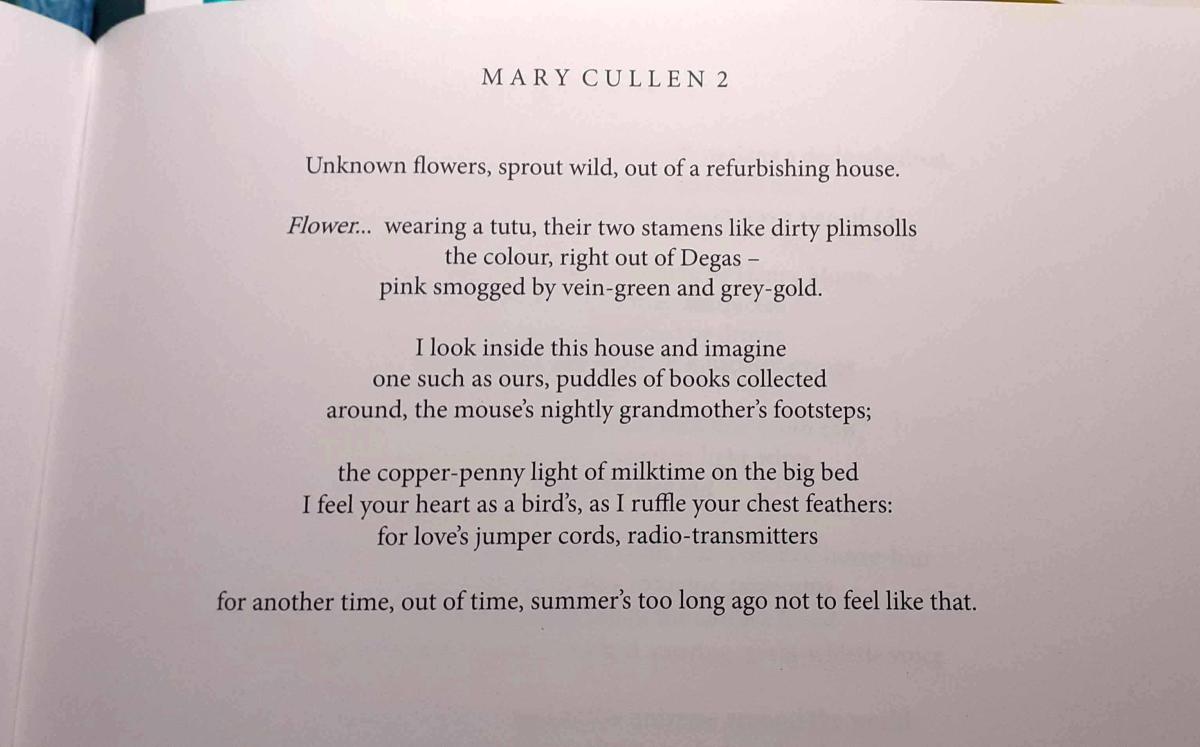
Mary Cullen 2 Page from HOLOGRAM
HOLOGRAM (2022)
Published by Odilo Press /Poems by Miguel Cullen / Designs by Alix Janta-Polczynski / Videography by Ivar Wigan, Agustina Comedi and Fede Velar
The book is available at £35.00 from https://www.poetrybooks.co.uk/collections/books/products/hologram-by-mi…
For more information on the poet www.miguelcullen.com /
'IT' – (2019) see lyrics on page 91 in the book / watch the video
https://files.cargocollective.com/c763941/Itapoem.mp4 /
Visual by Fede Velar /
Narrated by Miguel Cullen / Soundbite: Renegade - ‘Terrorist’ (1994) POEM 'IT' 2019





